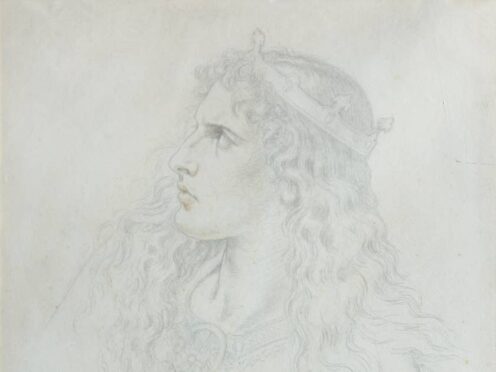
Sketches for a stained glass window commissioned by Scottish philanthropist Andrew Carnegie are among a number of works by Queen Victoria’s favourite artist appearing in an exhibition later this year.
The rarely seen images form part of a retrospective of Dunfermline-born artist Sir Joseph Noel Paton, which opens on September 14 in Dunfermline Carnegie Library & Galleries.
The sketches, featuring figures from Scotland’s heroic past, were designs for a window in Dunfermline Abbey commissioned by Dunfermline-born Carnegie who, as he said in one letter, wanted to create a “thing of beauty to stand for centuries”.

Carnegie, who returned from the US to see the window shortly after it was unveiled in June 1884, wrote to Paton to express his pleasure with the finished work: “I have seen the window under various conditions and it is superb. I am more than satisfied – I am delighted.”
Exhibition curator Lesley Lettice said the commission was important to Paton as well, and added: “As a son of Dunfermline, Paton was thrilled to create the designs for the Abbey windows – and we’re delighted to be showing them alongside so many highlights from his distinguished career.”
The exhibition features works from eight public collections and a number of private loans, and includes Carnegie’s letter to Paton as well as a letter to Paton’s sister Amelia Hill, a renowned sculptor, in which he describes Paton as “Dunfermline’s greatest son”.

The so-called “Carnegie Historical Window”, which can be seen in the nave of Dunfermline Abbey to this day, is considered to be highly symbolic.
It includes King Malcolm III and his wife Margaret in reference to the founding of the Abbey, while the figures of William Wallace and Robert the Bruce evoke Scotland’s fight for independence.
The Carnegie window is one of three in the Abbey designed by Paton.
The McLaren window depicts the Last Supper and the Resurrection, and the Spowart window features Jesus in the Garden at Gethsemane after his betrayal by Judas.
The Sir Joseph Noel Paton retrospective runs from September 14 to February 9.

Enjoy the convenience of having The Sunday Post delivered as a digital ePaper straight to your smartphone, tablet or computer.
Subscribe for only £5.49 a month and enjoy all the benefits of the printed paper as a digital replica.
Subscribe